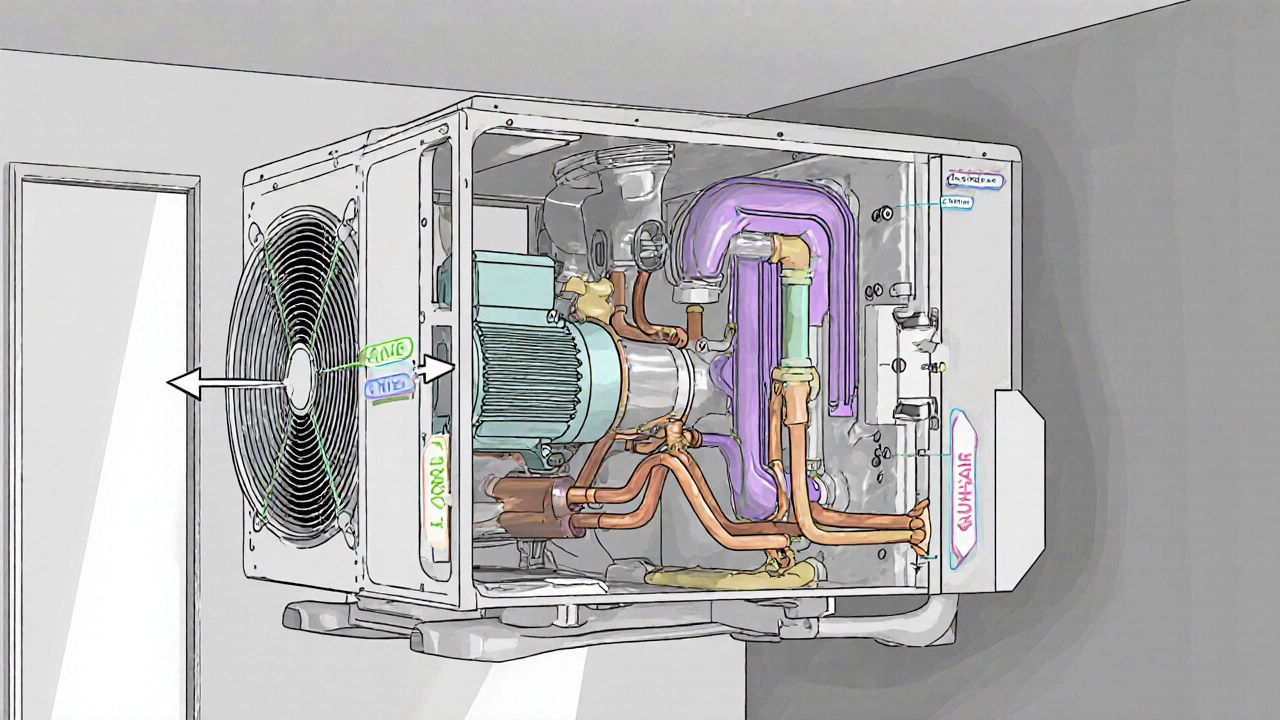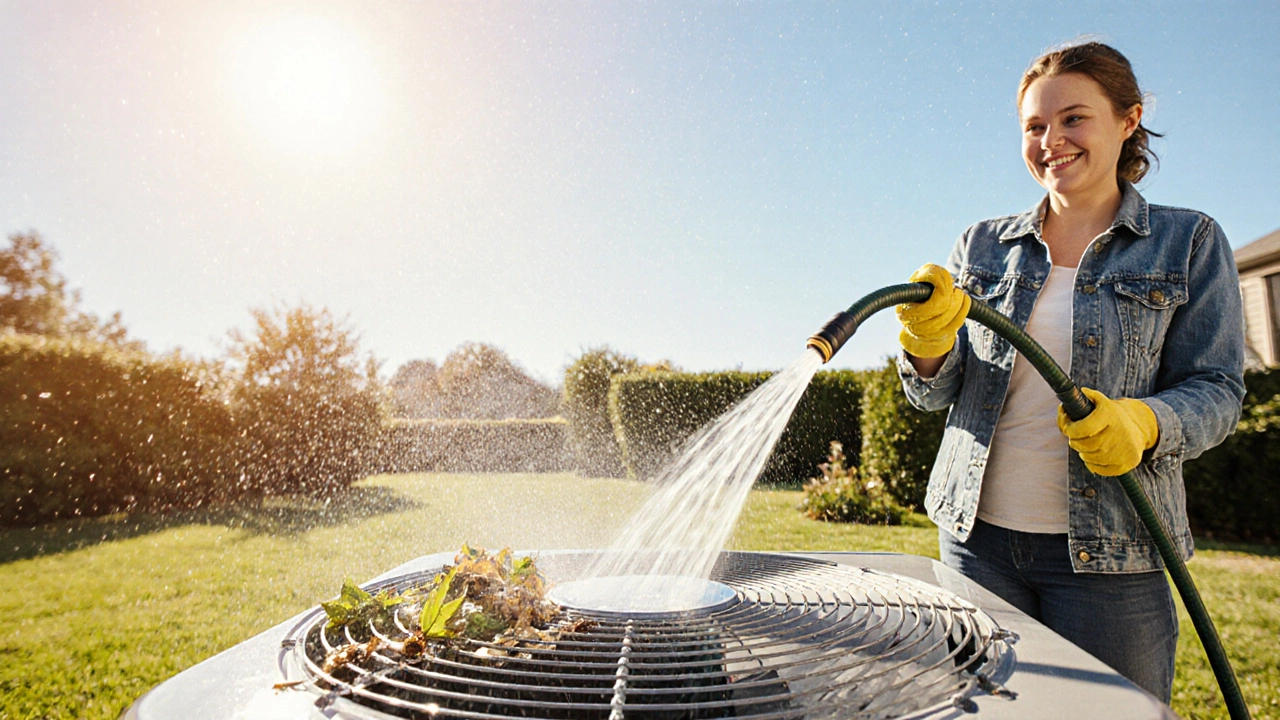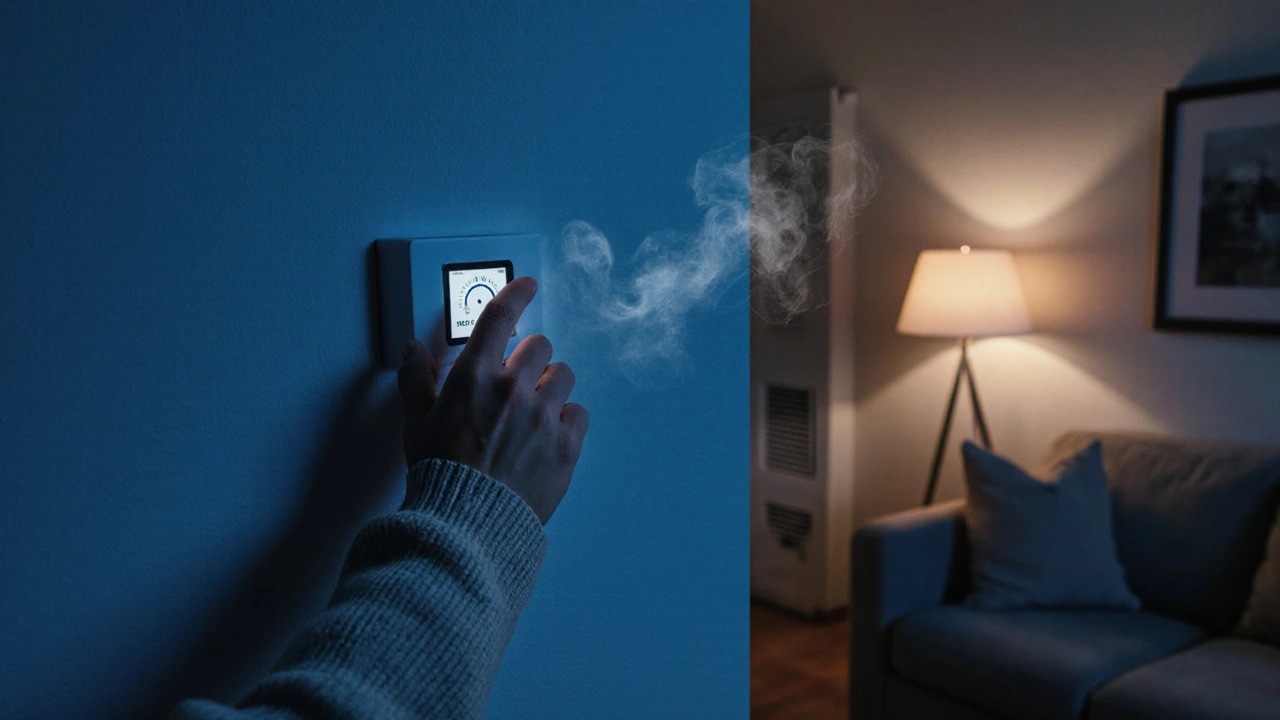Heat Pump Warm Air Diagnostic Tool
Find Your Problem
Select symptoms you're experiencing to identify likely causes of your heat pump not blowing warm air.
Select Symptoms
When your Heat Pump is a climate‑control system that moves heat from one place to another using a refrigerant cycle stops delivering warm air, the first reaction is usually frustration. You’ve set the thermostat, waited a few minutes, and still feel a draft of cold. Before you call a technician, it helps to know the most common culprits and how to check them yourself. This guide walks you through the inner workings of a heat pump, the red‑flag symptoms, and step‑by‑step diagnostics you can do safely.
How a Heat Pump Produces Warm Air
A heat pump isn’t a traditional furnace; it works more like a reversible refrigerator. The core components include a compressor the heart of the system that pressurizes the refrigerant, a fan motor drives the indoor blower to move air through the ducts, and an outdoor unit contains the coil where heat is absorbed or released. The refrigerant a fluid that cycles between liquid and gas to transport heat absorbs outdoor heat, the compressor raises its temperature, and the indoor coil (the heat exchanger the surface where warm air picks up heat before entering your rooms) releases that warmth into the airflow.
Top Reasons Warm Air Stops Flowing
- Thermostat settings or faults - A mis‑set thermostat or a dead battery can keep the system in cooling mode.
- Clogged air filter - When the air filter captures dust and debris to protect the fan and coil is dirty, the blower struggles and airflow drops.
- Low refrigerant charge - Leaks reduce the system’s ability to extract heat, leaving the indoor coil cold.
- Faulty compressor - If the compressor can’t compress the refrigerant, the heat‑exchange cycle stalls.
- Blocked outdoor coil - Snow, leaves, or grime on the outdoor unit limits heat absorption.
- Fan motor problems - A seized or slow‑running fan motor prevents warm air from being pushed through the ducts.
- Improper ductwork - Leaks or disconnected ducts can steal warm air before it reaches living spaces.
Step‑by‑Step Diagnostic Checklist
- Check the thermostat: ensure it’s set to "heat" and the temperature is above the current room level. Replace batteries if needed.
- Inspect the indoor air filter. If it looks dark or feels gritty, replace it - a standard filter costs under $20 and takes under five minutes.
- Listen for the compressor. A steady hum indicates it’s running; a clicking or silence suggests a fault.
- Feel the outdoor coil. It should be warm (or at least not freezing) during heating mode. If it’s icy, the defrost cycle may be stuck.
- Turn on the fan manually (if your unit has a "fan‑only" setting). If air moves but remains cold, the problem is likely in the heat‑exchange cycle.
- Check for error codes on the control panel. Many modern heat pumps display a numeric code you can match to the user manual.
- Inspect visible refrigerant lines for oil stains or corrosion - signs of a leak that require a professional fix.

Understanding Refrigerant Issues
Refrigerant leaks are tricky because the fluid is invisible. However, you can spot a few clues: reduced heating performance, ice buildup on the indoor coil, or a hissing sound near the outdoor unit. If you suspect a leak, the safest move is to call a licensed HVAC technician. Handling refrigerant without proper certification is illegal in many regions, including New Zealand, and can damage the environment.
When the Compressor Is the Bottleneck
The compressor is the only moving part that deals with high pressure. Overheating, electrical failures, or internal wear can cause it to shut down. Most systems have a safety thermostat that cuts power if temperatures climb too high. If you hear the compressor try to start, then click off, it may be tripping this protection. In that case, check for blocked airflow (dirty filter or obstructed outdoor coil) first - removing the blockage often resets the safety thermostat.
Maintenance Tips to Keep Warm Air Flowing
- Swap the air filter every 3 months, or monthly during high‑use seasons.
- Clear debris from around the outdoor unit; a simple garden hose rinse once a year keeps the coil clean.
- Schedule a professional tune‑up before the winter season. Technicians will test refrigerant pressure, electrical connections, and the defrost cycle.
- Seal any visible duct leaks with foil‑backed insulation tape or mastic.
- Keep the thermostat away from direct sunlight or drafts that could cause false temperature readings.

Quick Comparison of Common Causes vs Typical Signs
| Possible Cause | Symptom Observed | DIY Check |
|---|---|---|
| Thermostat set to cooling | Cold air despite heat mode | Verify mode and temperature setting |
| Clogged air filter | Weak airflow, occasional rattling | Inspect and replace filter |
| Low refrigerant | Ice on indoor coil, reduced heat | Look for oil spots, call pro |
| Blocked outdoor coil | Outdoor unit feels cold or icy | Clear leaves/debris, clean coil |
| Faulty compressor | Click‑click sound, no heat | Listen for hum, check error code |
| Fan motor failure | No airflow at all | Manually spin fan, listen for motor noise |
| Duct leaks | Warm air disappearing in rooms | Feel for drafts around vents |
Should You Call a Professional?
If you’ve walked through the checklist and still have cold air, it’s time to call an HVAC tech. Typical red‑flags include persistent compressor noise, continuous error codes, visible refrigerant leaks, or a system that won’t start at all. Professional service usually includes:
- Pressure testing for refrigerant levels.
- Electrical diagnostics on the compressor and fan motor.
- Cleaning of the indoor coil and blower assembly.
- Verification that the defrost cycle operates correctly.
Mini‑FAQ
Why does my heat pump blow cold air in heating mode?
The most common reasons are a thermostat set to cooling, a dirty air filter restricting airflow, or low refrigerant that prevents the heat‑exchange cycle from warming the indoor coil.
Can I recharge refrigerant myself?
No. Handling refrigerant requires certification and special equipment. Attempting it yourself is illegal in many places and can damage the system.
What does ice on the outdoor unit mean?
Ice often means the defrost cycle isn’t kicking in, usually because airflow is blocked or the thermostat is faulty.
How often should I replace the air filter?
Every three months is a good rule of thumb, but during heavy use or dusty conditions replace it monthly.
My heat pump makes a clicking sound but never warms up. What’s wrong?
A clicking sound often indicates the compressor’s safety thermostat is tripping, usually because of overheating caused by blocked airflow or low refrigerant.
By understanding how each part works and following the simple checks above, you can often pinpoint why your heat pump not blowing warm air situation occurs and decide whether a quick DIY fix or a professional call is the right move. Stay warm, stay safe, and remember that regular maintenance is the cheapest insurance against cold surprises.

I am an expert in the services industry with a focus on appliance repair. My passion lies in understanding how things work and educating others in simple, engaging ways. This enthusiasm fuels my writing, where I delve into topics around appliance maintenance and troubleshooting. I aim to make these subjects clear and accessible to all readers.